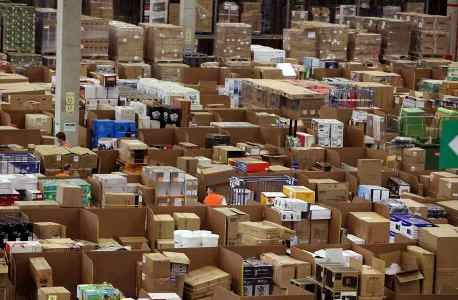
The e-retail market is set for a shake-out with slowing growth, greater competition, huge losses, bloated costs and reduced funding, notes Mohandas Pai
The last five years have witnessed a revolution in retail-buying habits across India, with e-commerce disrupting businesses.
For the first time a truly national market has been created electronically, allowing buyers from Shillong to Bengaluru and Jaipur to Srinagar the choice of goods and great prices.
For those of us living in cities with traffic congestion, pollution and long commutes, this has been the biggest improvement in the quality of life, as we do not need to go out to meet our needs.
The impact on the ecosystem has been unbelievable.
Huge investments have gone into the logistics industry, with next-day delivery or same-day delivery becoming the norm.
Hyper-local delivery companies fed on dollops of capital are solving the last-mile problem.
India’s major challenge of an inefficient supply chain costing 14 per cent of gross domestic product -- for the US, its five per cent; for China, six per cent -- may finally be solved, leading to reduced costs and greater efficiency and benefitting both producers and consumers.
Technology has led the way for this, with sophisticated portals, analytics, rule engines, artificial intelligence and machine-learning techniques, huge scaleable cloud infrastructure and data centres changing the paradigm in an incredibly short period of time. For the small manufacturer and the artisan, e-commerce has been the biggest game changer.
For the first time they have access to a truly global market from their place of work.
Consumers are, of course, laughing all the way to the bank, with so many vendors chasing them with huge discounts, an extremely wide array of goods, the comfort of the mobile phone and the home for delivery and purchases, no-questions-asked returns, price comparison sites, great technology etc.
Tier 2 and Tier 3 cities and villages have seen the highest growth, starved as they were of better goods and truly democratising retail.
A large number of jobs are being created.
At last count, e-commerce companies had created more than 200,000 jobs directly or indirectly in this area alone. Over the next five years more than 1.5 million jobs could be created in this sector, realising the long-held promise of good jobs in the retail sector.
Is all this too good to be true?
Well, this revolution is led by angel investors, venture capital funds and private equity funds investing at last count, at least $10 billion at increasing valuations.
Assocham in its recent report estimated that gross merchandise value for 2015 was around $23 billion and that this would rise to $38 billion in 2016.
Assuming a net value of $16 billion after discounts of at least an average of 30 per cent, the figures for 2015 are impressive.
Almost all the growth has been led by technology and discounts, with all companies bleeding money calling this an investment. Discounts rule the markets and the competition is a winner-takes-all game.
Assuming a loss of at least 10 per cent at the net value of $16 billion, one could assume a cash loss of $1.6 billion in the last year.
At current trends, the entire sector could be burning between $175 million and $200 million a month, setting the stage for a total burn of at least $2 billion in 2016 -- a high price to pay for market domination.
Of the $10 billion raised in this and connected sectors, one could assume a total burn of at least $6 billion as of date.
It is clear that there is a true disruption in retail and the change is here to stay.
But the movement has been led by deep discounts, with almost no loyalty being created.
Even though most companies have become marketplaces, they often subsidise the sale and the delivery, making losses on their books.
They have been able to raise capital in the hope that they would dominate the market.
Currently, the market is dominated by three large players, with the lead changing in the last year and one player falling behind.
For 2016/17 the portents are clear.
Fundraising to meet losses is getting more difficult with many investors clearly asking investees to break even.
Valuations in this sector and globally are becoming more sober, with more questions being asked. Leaders are emerging as the gap is increasing.
The fight for market domination will become more intense and many players with me-too models will die out.
The general broad portals and marketplaces are facing severe competition from specialised portals, which want to meet the specific needs of consumers and provide them the extra zing.
The market is set for a shake-out with slowing growth, greater competition, huge losses, bloated costs, a discounts-led consumer behaviour, tightened funding, greater compliance with taxes and tax issues.
These companies need to contain their burn, focus on consumer loyalty and brand, reduce the mad focus on discounts and GMV, cut costs and improve productivity and demonstrate that e-commerce can be a truly viable business.
The years 2016/17 will show us the winners and the large-scale casualties.
But e-commerce is here to stay.
It changed the retail industry irreversibly in 2015 and brought in greater efficiency and technology to India.
Mohandas Pai is chairman, Aarin Capital Partners, and a former CFO of Infosys
Shop @ Rediff Online Shopping












 © 2025
© 2025